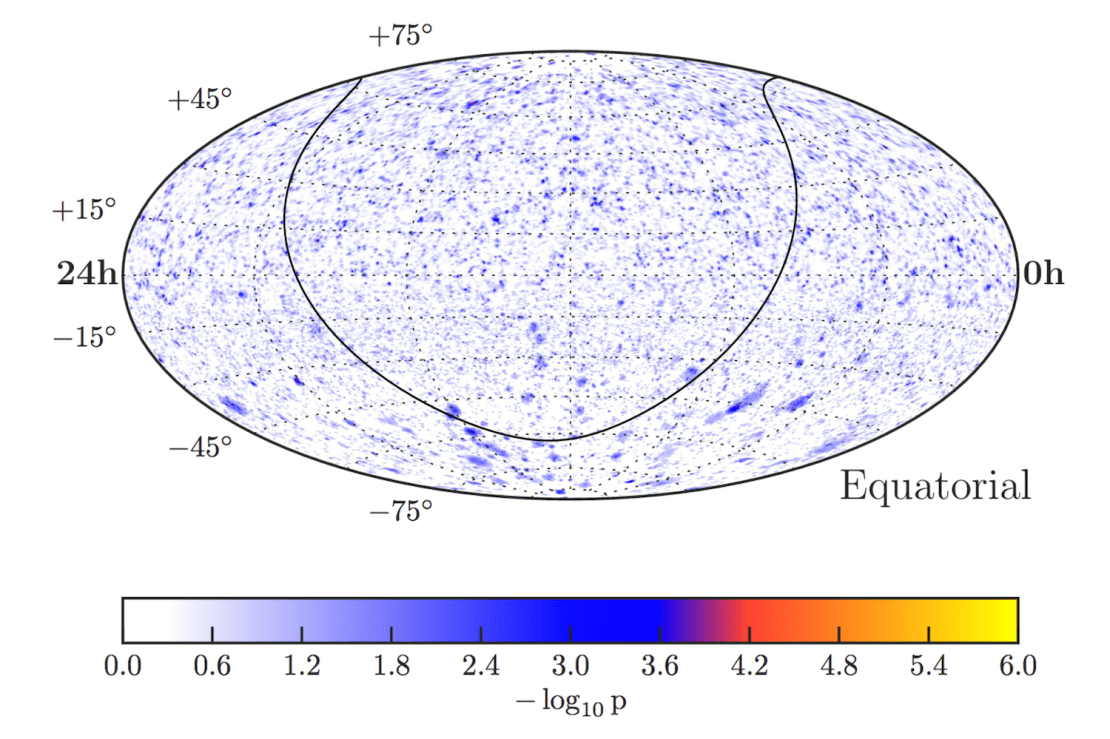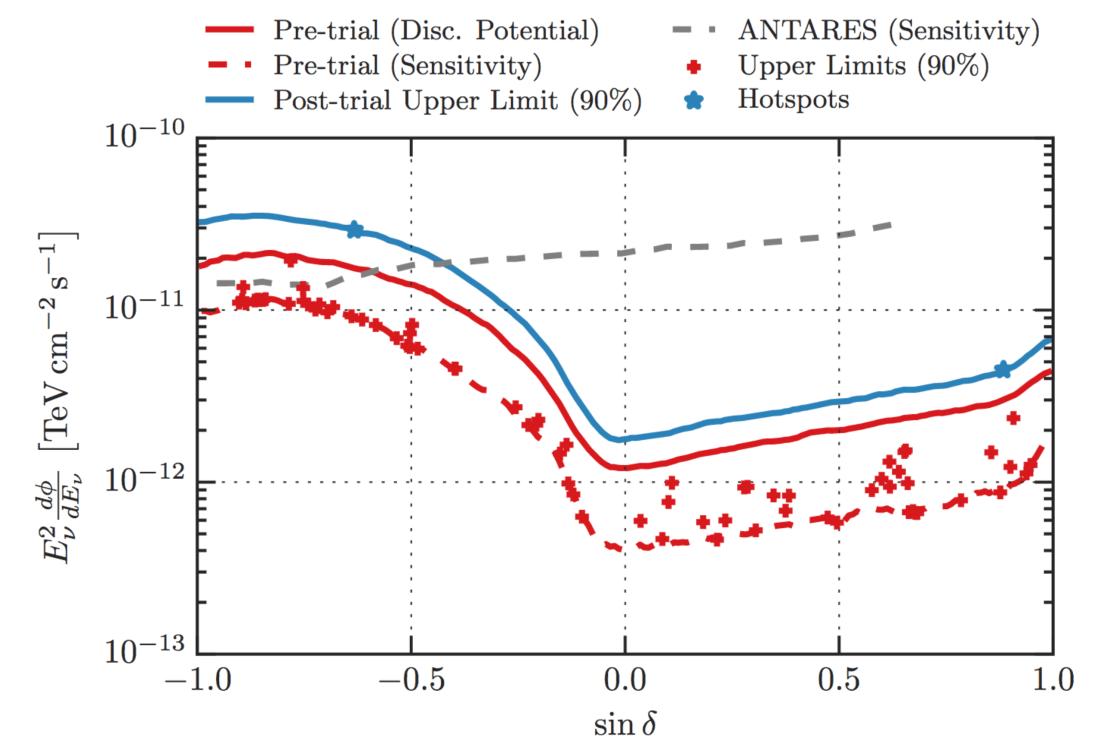Astrophysical neutrinos come in three flavors–electron, muon, and tau–and most of them will show up as a spherical pattern of light when they interact in the IceCube detector. But, sometimes, a long, bright track crosses the detector as a result of a muon neutrino producing a super-relativistic muon. These tracks are events with a good pointing resolution and therefore an object of desire in neutrino source searches. And, although track-like interactions are less abundant, their long travel distances allow the detection of muon neutrinos that interact with the Antarctic ice outside the instrumented volume, thus, providing an increased sample of muons neutrinos.
The IceCube Collaboration has just announced the results of a search for point-like sources using track-like neutrino candidates detected by IceCube over seven years, from 2008 to 2015. No source has been identified, but the sensitivity keeps improving at a fast pace and will allow IceCube to test accurate models that suggest that sources could soon be observed. These results have just been submitted to The Astrophysical Journal.

Selecting track-like neutrino events in IceCube is a challenge that researchers have been facing, and getting better at, since the Antarctic telescope started data taking in 2008. To do it, physicists use two different techniques.
The first one follows the initial design for IceCube searches for astrophysical neutrinos, i.e., looking to the Northern Hemisphere through the Earth, thereby using our planet to filter the enormous atmospheric muon background. The second one, which resulted in the discovery of astrophysical neutrinos, looks only for interactions that start in the detector, even though IceCube can measure the Cherenkov light produced by atmospheric muons before they enter the detector. Using this second technique, IceCube can look for astrophysical neutrinos everywhere in the sky.
Even after reducing the million-to-one muon background, atmospheric neutrinos are much more numerous than astrophysical neutrinos. However, we know that at increasingly higher energies, astrophysical neutrinos are more abundant, and they become the dominant type of neutrinos.
In this search, using both throughgoing and starting tracks, IceCube researchers have analyzed the full sky, looking for any clustering of neutrinos that could be pointing to a source. And, not without some disappointment, the search has again produced null results.
An especially interesting event is worth highlighting in this search besides the highest energy event already presented in previous studies: a straight downgoing starting track, with 430 TeV of deposited energy and which shows no coincident signal in IceTop, the surface component of the IceCube detector, thus indicating that it was not the result of a cosmic-ray interaction. However, no other neutrino was found to come from the same region of the sky.
As in previous analyses, scientists have also performed dedicated searches using catalogs of gamma-ray candidates. Also, IceCube looked for populations of weak sources. As with the all-sky search, results of these targeted searches were consistent with a background-only hypothesis. However, the new limits set IceCube’s sensitivity to neutrino sources below 10-12 TeV cm-2 s-1, in the entire northern sky for the first time.
The Crab Nebula, the strongest, steady TeV gamma-ray source in the sky, is a typical source to be considered in these searches. “With the added data, IceCube can now exclude neutrino emission at the level of the observed gamma-ray flux,” says Stefan Coenders, a graduate student at the Technische Universität München and one of the corresponding authors of this work.
Blazars are now in the spotlight for searches of neutrino sources. IceCube results set new constraints on these models, limiting the contribution of these sources to the flux of high-energy astrophysical neutrinos.

More important for progress in neutrino source searches is IceCube’s continued improvements to its sensitivity to point-like sources, which is not only due to increased data but also to a better understanding of our detector. As a result, the progression of the 5 sigma discovery is faster than expected.
+ info “All-sky search for time-integrated neutrino emission from astrophysical sources with 7 years of IceCube data,” IceCube Collaboration: M. G. Aartsen et al. The Astrophysical Journal 835 (2017) 2, iopscience.iop.org arxiv.org/abs/1609.04981